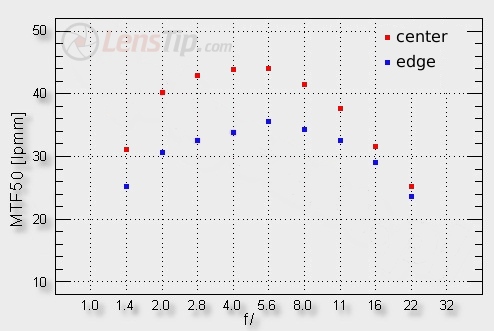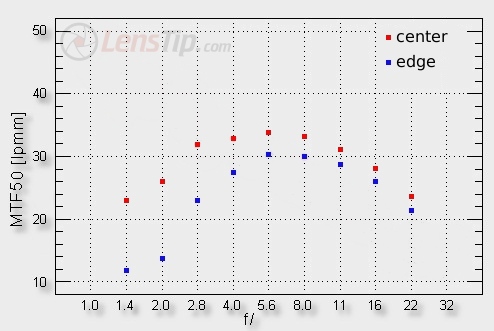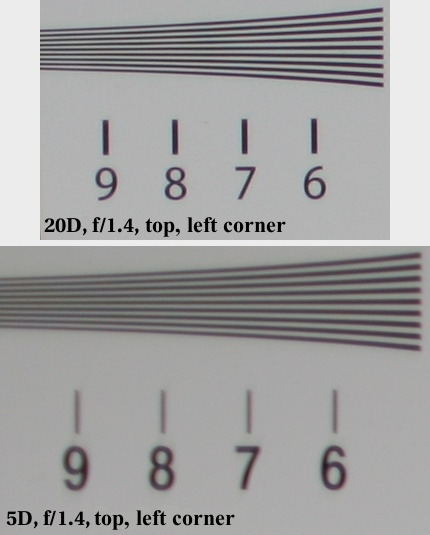Canon EF 35 mm f/1.4L USM
4. Image resolution
Let’s start with the lens’s performance on a smaller sensor, The graph below shows the frame center and corner performance.

Please Support UsIf you enjoy our reviews and articles, and you want us to continue our work please, support our website by donating through PayPal. The funds are going to be used for paying our editorial team, renting servers, and equipping our testing studio; only that way we will be able to continue providing you interesting content for free. |
- - - - - - - - - - - - - - - - - - - - - - - - - - - - - - - - - - - - - - - - - - - - - - - -
The frame picture quality is perhaps not outstanding and record-breaking but also you can hardly find a fault with it. Only by f/1.4 the lens doesn’t reach 30 lpmm but for higher aperture values it exceeds that level without a problem, sometimes even significantly, which allows you to take sharp or very sharp pictures.
At the end of the 20D performance description we present the test chart excerpts, saved as JPEG files, at f/1.4 and f/4.0

Now let’s progress to the full frame performance, which can be seen in the picture below.

First question, which arises here is: why these values are so low? The answer is not so difficult to find. The linear pixel density on a full frame Canon 5D detector is almost 30 % lower than on a smaller 20D detector. In fact the MTF values are lower by the same factor because the 20D record result by f/5.6 is exactly 29% higher than 34 lpmm, reached on 5D by f/5.6. Small wonder that our assessment of the frame center performance will be exactly the same as for 20D – it is truly outstanding, as it befits an expensive L-series!
With the frame corner results, there is some modification. The full frame edge is not the same as on the APS-C sensor and it can be noticed clearly by f/1.4 and f/2.0, which stand out quite a lot from the center results. If we use the lens wide open and we want to have sharp edges we have to stop down to at least f/2.8.
In the picture below we present how big differences we found between these two detectors performances; you can see the excerpts of the left-hand upper corner of the test chart, obtained on 20D and 5D by f/1.4.







